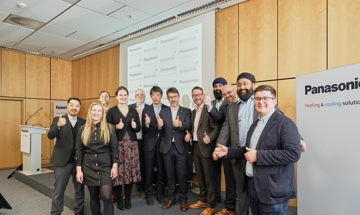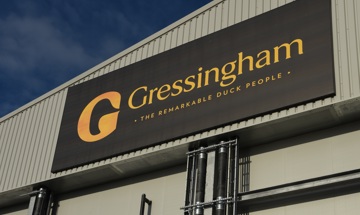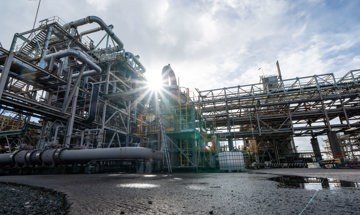-
New whitepaper from Bosch, Centrica and Ceres concludes that hydrogen and electrification can work together to decarbonise the UK’s energy system, but more support will be needed for the hydrogen market if it is to deliver on its potential in the energy transition.
-
Hydrogen is emerging as a key pillar in the move to net zero.
-
The Prime Minister’s COP29 comments can only be realised with hydrogen.
-
One of the ways in which hydrogen can provide power is via solid oxide fuel cells (SOFCs) which were initially developed by the space and military sectors.
-
Use cases for SOFCs include data centres, industry, shops, hospitals and marine power.
Today Bosch, Centrica and Ceres launch a whitepaper titled “The role of hydrogen in decarbonising UK power generation”. This whitepaper explores the challenges and opportunities of decarbonising the UK's electricity system, with a focus on the role of hydrogen to create power via solid oxide fuel cells (SOFCs).
At COP29 the Prime Minister confirmed the UK’s goal to be the first major economy to deliver clean power by 2030. Hydrogen will be essential in making that ambitious target a reality.
SOFCs are the size of a large fridge and can be stacked together to generate even more electricity. Locations with a high install base of SOFCs, such as California, already demonstrate the value this technology can have in sectors that cannot risk power outages. For example, use cases include hospitals and data centres. With the surge in energy demand required to develop products and services that use artificial intelligence, SOFCs could provide the energy to power this research and development.
Analysis on the routes to achieving net zero have demonstrated that an integrated energy system, using both electricity from the grid and hydrogen, can achieve significant cost savings and support the achievement of decarbonisation goals.
Renewable energy rarely produces a consistent amount of electricity. Excess generation could be stored as hydrogen to manage intermittency and reduce curtailment. A hydrogen backbone in the UK would connect producers with consumers and unlock the full benefit of hydrogen storage.
In addition, incorporating hydrogen into the energy system resolves issues of relying on a single energy vector and can increase our energy system resilience.
According to interviews with industry stakeholders that form the basis of the whitepaper, there are waiting times in excess of five years for new connections to the grid in some regions, which can hinder the development of new housing and businesses as well as the uptake of distributed renewable generation. Fuel cells could offer a viable alternative to diesel generators or grid extensions, as they can provide clean and reliable power on-site until a grid connection is available.
The whitepaper also discusses the gaps in policy and regulation around the storage, distribution and utilisation of hydrogen. A recent House of Commons report acknowledged that hydrogen ‘has the potential to contribute to the delivery of the government’s commitment for a fully decarbonised power sector by 2035’ but there is currently no mechanism in place to support this.
Read the whitepaper here.

News
British Gas Announces Strategic Partnership with NIBE to Enhance Heat Pump Service and Support
Sustainability

News
British Gas Partners with Panasonic to Provide Service & Maintenance for Panasonic Aquarea Air Source Heat Pumps.
Sustainability

News
Centrica Business Solutions powers Gressingham Foods into a sustainable future
Sustainability

News
Centrica Business Solutions accelerates Solihull Hospital’s journey to net zero with new energy centre
Sustainability

News
British Gas partners with heata on trial to reuse waste heat from data processing
Sustainability

News
Spirit Energy’s Morecambe Gas Hub Marks 40 Years of Powering UK
Sustainability
